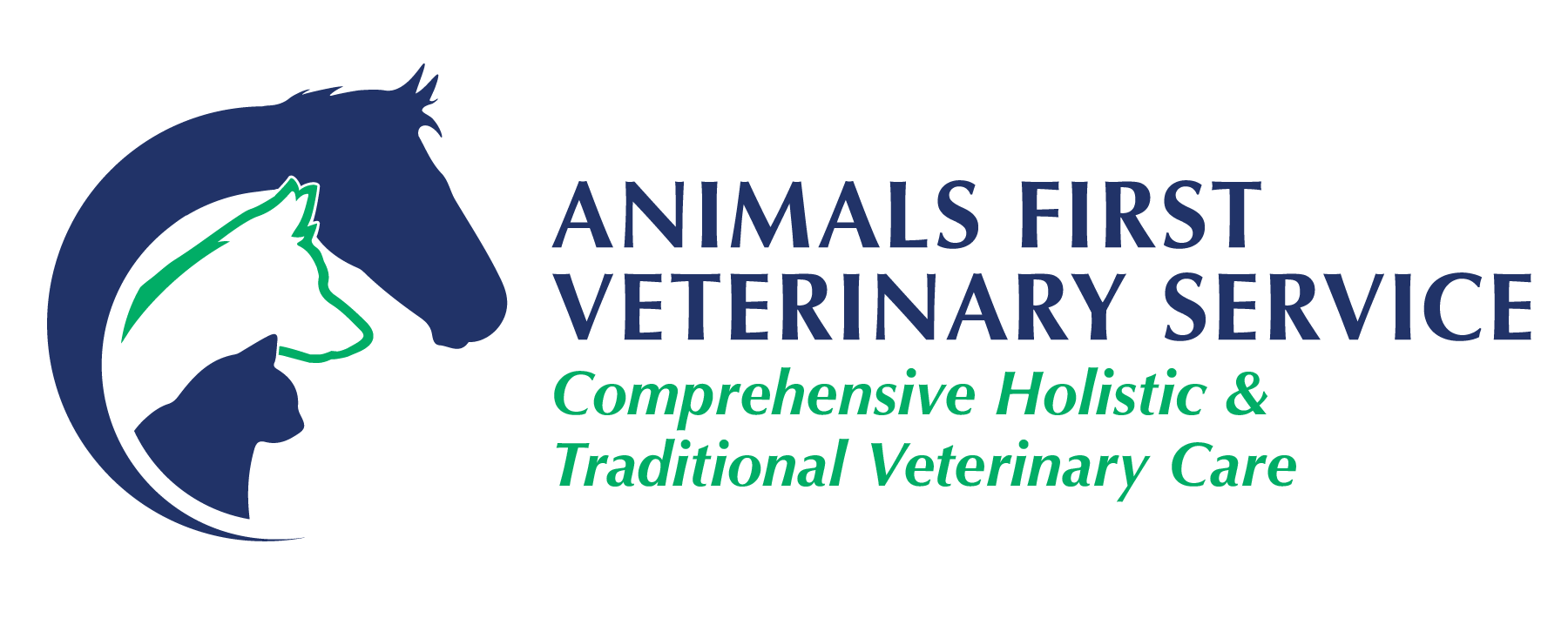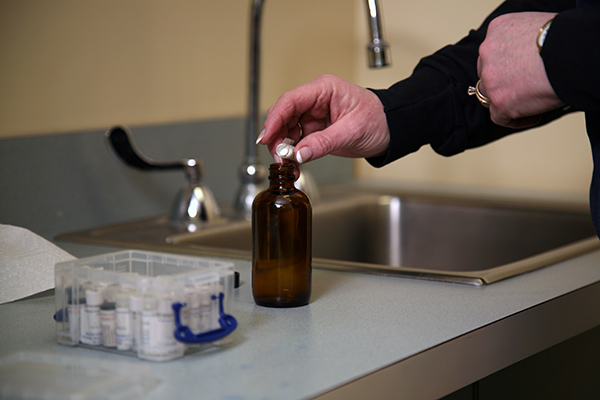The most common autoimmune disease in dogs is by far skin disease. In our practice, we see new cases of skin disease every week. The stories told by owners of the patients affected are very often similar to one another. Very commonly, the skin disease has started within one to three months after one or more vaccinations. The patient is often eating dry kibble foods, and the patient has been given annual vaccinations since puppyhood. The patient is most commonly itchy and is suffering from skin or ear infections, or both. They may have bacterial or fungal skin or ear disease.
It is important from the outset to understand that it is not the fault of the bacteria or fungus in the causation of disease. It is the manipulation of the immune system by vaccines and the unhealthy gastrointestinal tract that has allowed these organisms to multiply and cause pathology in the dog. Patients with normal healthy gut flora, skin flora, and ear flora are able to resist these diseases and remain healthy. It is when the immune system has been damaged that the patient is no longer able to resist the proliferation of bacteria or fungus. In a similar manner, they become sensitive to both their food and their environment. Proteins in food become allergens in these dogs, and then the immune system attacks the foods, producing symptoms most commonly in the skin.
These sensitivities are different for each patient. It is our first line of defense to determine what they are sensitive to in order to begin the process of treatment. We can change their diet to homemade food containing ingredients to which they are not sensitive. This can be only the beginning, as when on the path to gut healing, we often have to change the diet more than once as sometimes a patient becomes sensitive to the new diet over a few weeks. In some cases, we have had to change the diet up to three times to allow their system to settle into a diet with ingredients appropriate for their system.
We have developed several methods of helping these patients, and every patient is different in their treatment to help them heal from their autoimmune disease. This healing journey is rarely short. These patients require several visits, and no patient is healed with only one visit.
A review of pharmaceutical medications for allergic skin disease:
Oftentimes, patients arrive at our clinic having been treated with a variety of immunosuppressants to quell their itching. A review of the common medications and their actions is appropriate for an understanding of why they do not work.
Prednisone (or prednisolone)– this medication is one of the most commonly used and oldest immunosuppressive medications. It is a synthetic glucocorticoid. This class of chemicals is normally produced by the adrenal gland to assist the body with stressful situations and decrease inflammation. Administration of these drugs results in modulating cells of the immune system to include T cells, peripheral white blood cells, lymphocytes, and eosinophils. These changes to the circulating immune cells result in decreased inflammation, decreased histamine release (in the case of an allergic reaction, for example), decreased ability to respond to viral or other infections, and generalized immunosuppression (VIN Veterinary Drug handbook, modified December 2024). Fortunately, we can still use this medication if needed in very low doses to help with symptoms early in the treatment stages of allergic skin disease. It is the long term administration of this drug that is problematic in most cases.
Apoquel – This is a relatively new immune-modulating drug that is commonly used for allergic skin disease in dogs. This drug inhibits several cytokines which are released by Helper T cells in allergic skin disease. These cytokines are inhibited through the inhibition of Janus Kinase (JAK) enzymes which the cytokines depend upon for activation. ( Gonzales, AJ, et. al) Oclacitinib(Apoquel) is a novel Januz Kinase Inhibitor with activity against cytolkines involved in allergy. (J Vet Pharmacol.August 2014 37(4): 317-324). Immune modulation by this drug can result in urinary tract infection, recurrence of Demodectic mange, decrease in white blood cell counts, and loss of protein through the kidney (Tater, K, Gossman,M, and Fadok, V. Apoquel. VIN. Revised December 22, 2023).
Atopica – This drug is cyclosporine and it is an inhibitor of T-Cell immunity (affecting both T-Helper cells and T-Cytotoxid lymphocytes), and indirectly decreases humoral (antibody-mediated) immunity. This drug is less commonly used for skin disease but has a variety of uses in other auto-immune diseases. It does not cause bone marrow suppression and is not recommended for any dog who has a history of cancer or exposure to Toxoplasmosis (VIN Veterinary Drug Handbook, Cyclosporine, June 30, 2017).
After a review of the above medications, it is obvious that each of these medications suppress the immune system in an attempt to decrease the symptoms of itch and skin inflammation. While these medications are overall very good at decreasing the symptoms of allergy, they do nothing to repair the damaged immune system and/or to allow the patient to move forward toward healing. These medications, when used, must be used chronically to keep the symptoms of allergy at bay. Removing the medication leads to a return of symptoms and continued expression of a damaged immune system.
Holistic treatment of allergic skin disease:
Over the past 20 years, I have tried many therapies to treat and repair the damaged immune system of allergic dogs and cats. Each patient is different in their treatment, based on their symptoms, length of disease, and owner preference for treatment.
Most of our cases begin with an allergy test. Each patient’s immune system has been modulated in a different way and they have each become sensitive to different foods, or environmental factors because of the damage to their immune system. Different patients have different symptoms and different levels reactivities to our attempts to settle the immune reactions.
Example Therapies:
Bioenergetic testing and treatment:
We have found that bioenergetic testing is an appropriate and accurate method to determine which allergens are creating the increased inflammation and itch. We have used the 5 Strands Test effectively to determine which food and which environmental allergens are causing itch in our patients. We are also currently using the Qest4 System in our office to determine which allergens are creating a problem.
With the Qest 4 system, we only need a small hair sample to determine which foods are a problem and also to perform a complete body scan to create an energetic homeopathic remedy to begin to treat the patient’s immune system to help it return to a normal baseline. With the use of this system, we have found that when we are treating a new disease, it commonly responds very quickly, within 1-2 months. With patients who have been itching and inflamed for a year or more, and who have been treated with immunosuppressive medications, the healing time is longer and more intense.
The results of the bioenergetic testing also gives us a list of foods that we can use to create a homemade diet for each patient that allows for non-allergenic foods to be fed in order to help calm the immune reactions while we are working on healing the immune system.
UV Light Blood Therapy:
UV light blood therapy is a therapy that was used from 1928-1950’s to treat many types of inflammation and infection. This treatment fell from favor when antibiotics were introduced. In our office we find it useful for treatment of allergic skin disease, cancer, kidney disease, protein-losing nephropathy and many types of inflammation. See link on our website for UV Light Blood Therapy.
Ozone Therapy:
Ozone therapy is used in our clinic to treat skin and ear inflammation and infection as a part of the allergic treatment. Ozone decreases inflammation and treats infection. Ozone can be used orally as ozonated water, rectally as a gas or as saline, or topically as a gas. This therapy is often used daily when given orally, 2-3 times weekly when used per rectum for effectiveness. See the link on our website for Ozone Therapy.
Use of Classical Homeopathy:
Classical Homeopathy was discovered by Samuel Hahnemann in the late 1800’s. This form of medicine involves the use of specific homeopathic remedies which are matched to the patient’s condition. We use homeopathy in our practice for a variety of illnesses. Homeopathy is often used with allergic skin disease when there is an emotional component which helps us to match the correct remedy, as Homeopathy commonly treats the emotional component before the physical component of disease. Here is a link to our page on Homeopathy.
Chinese Herbal Medicine:
Chinese Herbal Medicine is commonly used in our practice as each skin disease can be characterized as Hot, Dry, Damp, Deficient, or Excess. These terms are used in Chinese Medicine to describe disease and the herbs chosen to treat the disease description. It is common for patients suffering from skin disease to be Hot and Damp, allowing the use of herbs that are Cooling and Drying to provide symptom relief.
Fecal Transfer or Oral administration of Fecal material from Healthy Dogs:
As mentioned above, the gastrointestinal tract is always involved in the development of skin disease. We often test our patients using the Animal Biome Testing kit to determine what type of help the patient needs with healing their digestive tract. Often we place our patients on Gut Restore by Animal biome or another product from this company to help to improve the microbiome which is needed for healthy digestion.
Given the variety of possibilities of treatment for our patients suffering from allergies, we often put together a treatment plan involving one or more of the above possible therapies, depending on how the case presents.
Time for improvement or resolution of symptoms:
Unlike pharmaceuticals, holistic treatments often take longer to stop the itch. It involves a process of avoiding allergens, treating infections, and calming the immune system. Most patients have at least monthly rechecks at the office until the skin calms. Clients should plan on a 6 month period of healing, with continuation of a homemade diet for life.



